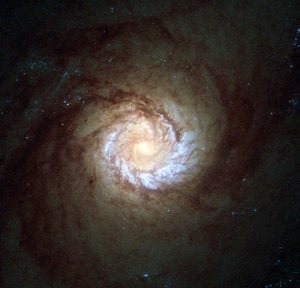Accept all cookies Accept only essential cookies See our Cookie Notice

About ESA
The European Space Agency (ESA) is Europe’s gateway to space. Its mission is to shape the development of Europe’s space capability and ensure that investment in space continues to deliver benefits to the citizens of Europe and the world.
Highlights
ESA - United space in Europe
This is ESA ESA facts Member States & Cooperating States Funding Director General Top management For Member State Delegations European vision European Space Policy ESA & EU Space Councils Responsibility & Sustainability Annual Report Calendar of meetings Corporate newsEstablishments & sites
ESA Headquarters ESA ESTEC ESA ESOC ESA ESRIN ESA EAC ESA ESAC Europe's Spaceport ESA ESEC ESA ECSAT Brussels Office Washington OfficeWorking with ESA
Business with ESA ESA Commercialisation Gateway Law at ESA Careers Cyber resilience at ESA IT at ESA Newsroom Partnerships Merchandising Licence Education Open Space Innovation Platform Integrity and Reporting Administrative Tribunal Health and SafetyMore about ESA
History ESA Historical Archives Exhibitions Publications Art & Culture ESA Merchandise Kids Diversity ESA Brand CentreLatest
Space in Member States
Find out more about space activities in our 23 Member States, and understand how ESA works together with their national agencies, institutions and organisations.
Science & Exploration
Exploring our Solar System and unlocking the secrets of the Universe
Go to topicAstronauts
Missions
Juice Euclid Webb Solar Orbiter BepiColombo Gaia ExoMars Cheops Exoplanet missions More missionsActivities
International Space Station Orion service module Gateway Concordia Caves & Pangaea BenefitsLatest
Space Safety
Protecting life and infrastructure on Earth and in orbit
Go to topicAsteroids
Asteroids and Planetary Defence Asteroid danger explained Flyeye telescope: asteroid detection Hera mission: asteroid deflection Near-Earth Object Coordination CentreSpace junk
About space debris Space debris by the numbers Space Environment Report In space refuelling, refurbishing and removingSafety from space
Clean Space ecodesign Zero Debris Technologies Space for Earth Supporting Sustainable DevelopmentLatest
Applications
Using space to benefit citizens and meet future challenges on Earth
Go to topicObserving the Earth
Observing the Earth Future EO Copernicus Meteorology Space for our climate Satellite missionsCommercialisation
ESA Commercialisation Gateway Open Space Innovation Platform Business Incubation ESA Space SolutionsLatest
Enabling & Support
Making space accessible and developing the technologies for the future
Go to topicBuilding missions
Space Engineering and Technology Test centre Laboratories Concurrent Design Facility Preparing for the future Shaping the Future Discovery and Preparation Advanced Concepts TeamSpace transportation
Space Transportation Ariane Vega Space Rider Future space transportation Boost! Europe's Spaceport Launches from Europe's Spaceport from 2012Latest

Messier Monday
Thank you for liking
You have already liked this page, you can only like it once!
This huge ball of stars — around 100 billion in total — is an elliptical galaxy located some 55 million light-years away from us. Known as Messier 89, this galaxy appears to be perfectly spherical; this is unusual for elliptical galaxies, which tend to be elongated ellipsoids. The apparently spherical nature of Messier 89 could, however, be a trick of perspective, and be caused by its orientation relative to the Earth.
Messier 89 is slightly smaller than the Milky Way, but has a few interesting features that stretch far out into the surrounding space. One structure of gas and dust extends up to 150 000 light-years out from the galaxy’s centre, which is known to house a supermassive black hole. Jets of heated particles reach out to 100 000 light-years from the galaxy, suggesting that Messier 89 may have once been far more active — perhaps an active quasar or radio galaxy — than it is now. It is also surrounded by an extensive system of shells and plumes, which may have been caused by past mergers with smaller galaxies — and implies that Messier 89 as we know it may have formed in the relatively recent past.
Messier 89 was discovered by astronomer Charles Messier in 1781, when Messier had been cataloguing astronomical objects for 23 years — ever since he mistook a faint object in the sky for Halley’s Comet. Upon closer inspection, he realised the object was actually the Crab Nebula. To prevent other astronomers from making the same error, he decided to catalogue all the bright, deep-sky objects that could potentially be mistaken for comets. His methodical observations of the night sky led to the first comprehensive catalogue of astronomical objects: the Messier catalogue! Messier 89 holds the record for being the last ever giant elliptical to be found by Messier, and the most perfectly spherical galaxy in the entire catalogue of 110 objects.
-
CREDIT
ESA/Hubble & NASA, S. Faber et al.; CC BY 4.0 -
LICENCE
CC BY 4.0 INT or ESA Standard Licence
(content can be used under either licence)

A hungry starburst galaxy

Bucking the trend

A glittering cluster shines again

The hidden intricacies of Messier 106















 Germany
Germany
 Austria
Austria
 Belgium
Belgium
 Denmark
Denmark
 Spain
Spain
 Estonia
Estonia
 Finland
Finland
 France
France
 Greece
Greece
 Hungary
Hungary
 Ireland
Ireland
 Italy
Italy
 Luxembourg
Luxembourg
 Norway
Norway
 The Netherlands
The Netherlands
 Poland
Poland
 Portugal
Portugal
 Czechia
Czechia
 Romania
Romania
 United Kingdom
United Kingdom
 Slovenia
Slovenia
 Sweden
Sweden
 Switzerland
Switzerland
























